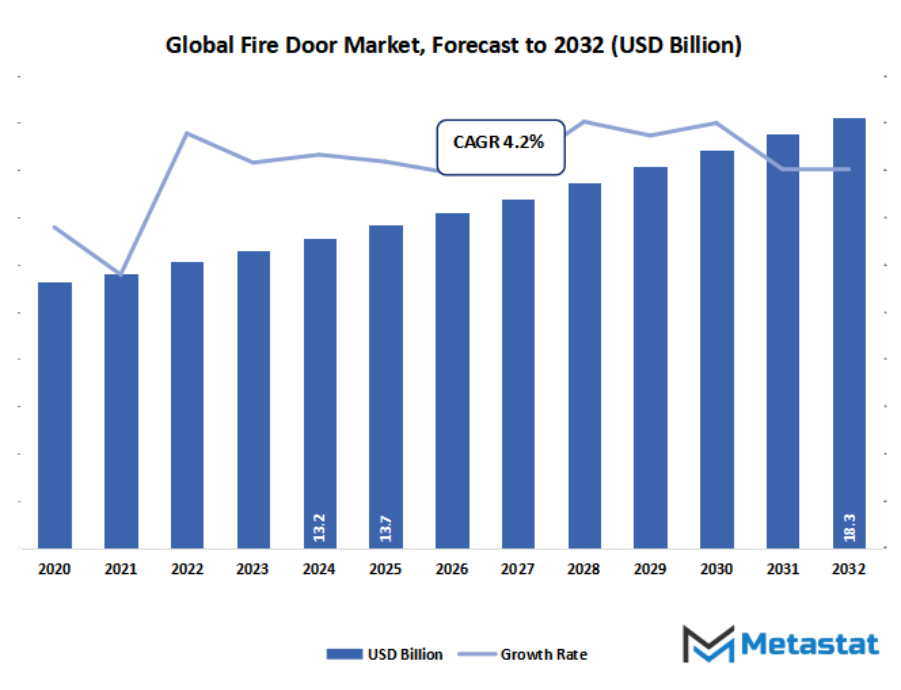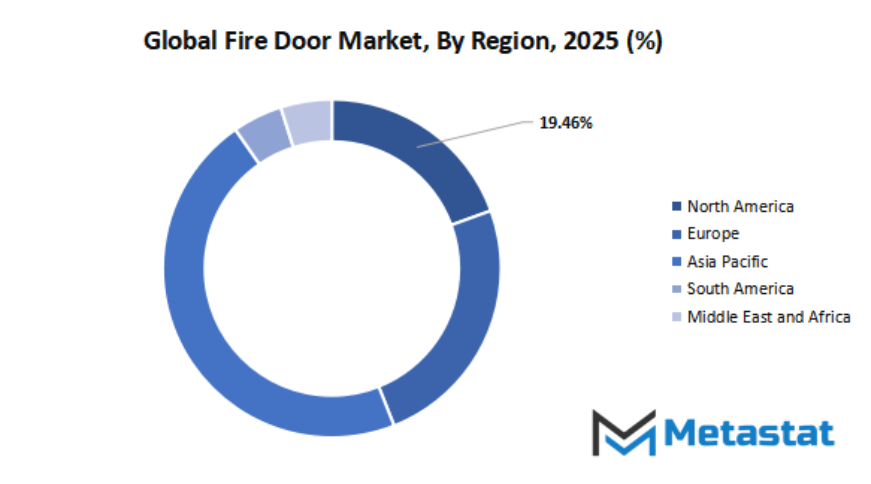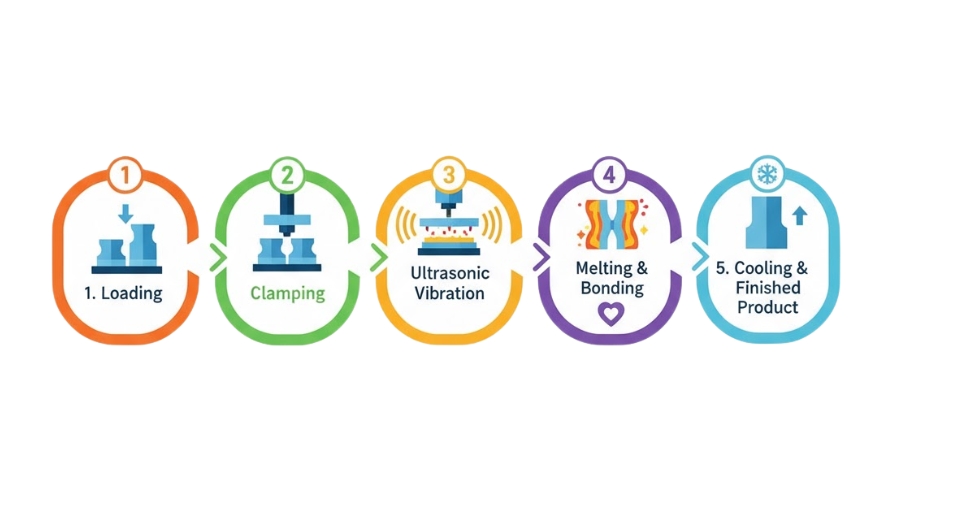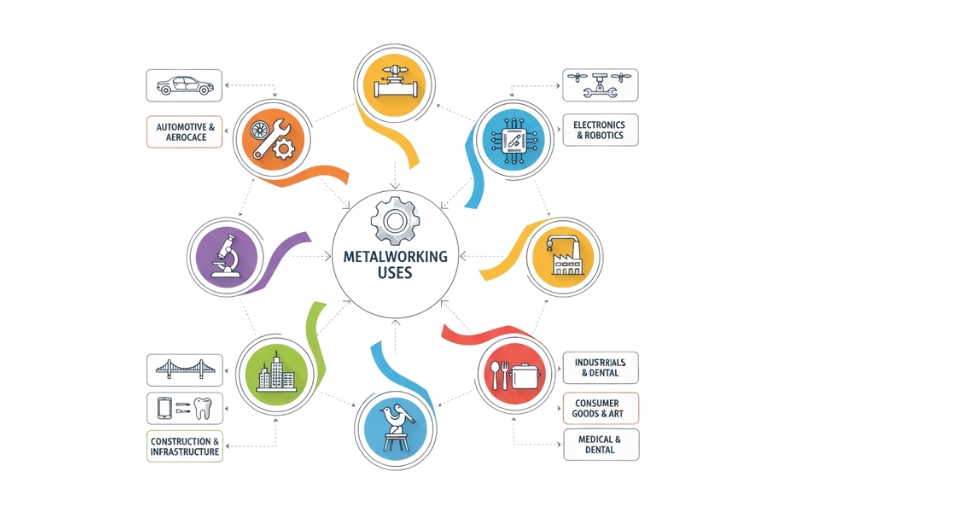Global Fire Door Market - Comprehensive Data-Driven Market Analysis & Strategic Outlook
The Global Fire Door Industry and market will transcend the limits of conventional safety standards, establishing an environment where regulation and innovation will coexist. The protective barrier that once was a mere basic shielding element will increasingly become more sophisticated as part of future infrastructure, not just fire-resistant but part of intelligent systems. As the emphasis on sustainable development further influences the practice of construction, the industry will experience fire doors made with materials that satisfy both ecological requirements and safety needs. This change will open new paths for design, engineering, and conformity, taking the market into a wider landscape than the traditional standards of the present.
- Global fire door market valued at approximately USD 13.7 Billion in 2025, growing at a CAGR of around 4.2% through 2032, with potential to exceed USD 18.3 Billion.
- Hinged Fire Door account for nearly 59.4% market revenues, driving innovation and expanding applications through intense research.
- Key trends driving growth: Stringent and evolving building safety codes and regulations globally., Rising investment in commercial, industrial, and high-rise residential construction.
- Opportunities include Innovation in materials for enhanced fire resistance and aesthetic integration.
- Key insight: The market is set to grow exponentially in value over the next decade, highlighting significant growth opportunities.

What new substances or layout improvements should redefine the safety and performance of fire doorways inside the coming years, and how may they disrupt traditional manufacturing methods? Could stricter global constructing policies accelerate the adoption of advanced hearth door systems, or will value pressures create resistance in positive areas? How might shifting urban development trends and sustainability desires form the long-term call for hearth doors throughout both residential and business areas?
In the future, the global fire door market will not be confined to supplying industries like commercial and residential building. It will move into public infrastructure developments, transportation terminals, and even cutting-edge industrial buildings, where safety and longevity will be viewed as a requirement rather than an afterthought. The integration of digital monitoring systems and fire door installations will also be a game-changer, and real-time data will enhance safety measures and make maintenance processes more efficient. This will turn fire doors from mere static installations into active contributors in building management.
Market Segmentation Analysis
The global fire door market is mainly classified based on Type, Operation, Fire Resistance, End Use.
By Type is further segmented into:
- Hinged Fire Door - Hinged fire doors will remain popular with installations because of convenience of fitting and economy. Improved materials and designs in the years to come will improve safety and aesthetics. Increased use in urban residential areas and small facilities will drive this type ahead in the global fire door market.
- Double-Action Fire Door - Double-action fire doors will be more popular where two-way facility access is critical, i.e., hospitals and big commercial buildings. With growing importance on free evacuation, this type will be combined with sophisticated sealing and fireproof materials. Such a trend will mark its future in the global fire door market.
- Sliding Fire Door - Sliding fire doors will gain popularity in high-rise buildings and warehouses where space efficiency is paramount. Future designs will have automated tracks, sensors, and hard-core materials. The emphasis on efficiency and safety will influence the adoption of sliding systems in the global fire door market.
- Fabric Fire Doors/Curtains - Fabric fire doors and curtains will be appreciated for versatility in shopping malls, theatres, and industrial designs. With the move in construction toward modular environments, lightweight but fire-resistant materials will gain increased traction. This versatility will make them a major component of the global fire door market in the coming years.
- Flush-Glazed Fire Door - Flush-glazed fire doors will have an increased application in corporate and high-end projects, striking a balance between transparency and safety. Advanced glass technology and strength of structure will fulfill contemporary architectural requirements. Focusing on looks and durability, this segment will grow its contribution within the global fire door market in upcoming construction.
- Others - Other styles like rolling or folding doors will persist in meeting special requirements in industries and public facilities. Such solutions will improve with improved automation and enhanced fire-retardant cores. Tailoring will assist such doors to consolidate their positions in specialized segments of the global fire door market in due time.
By Operation the market is divided into:
- Manual - Manual fire doors will continue to find extensive application in low-intensity housing and cost-sensitive projects. Simplicity and cost-effectiveness will ensure ongoing demand. Improvements in the future will target strong hinges, close seals, and light cores, so that manual types continue to provide vital functions within the global fire door market in various geographies.
- Automatic - Automatic fire doors will find more installations in hospitals, airports, and business towers where traffic management is an important aspect. Future innovations will feature AI-based sensors with fast response in case of emergencies. This combination of convenience and protection will enable automatic systems to gain increased preference in the global fire door market.
- Electric - Electric fire doors will enhance their position in technologically upgraded buildings. Centralized control and energy savings will come through integration with building management systems. As the construction industry moves towards smart infrastructure, the market for electric doors will continue to grow steadily, improving the safety level in the global fire door market across various industries.
By Fire Resistance the market is further divided into:
- EI 30 - EI 30 fire doors will be used in domestic and low-risk properties where short-term holding is adequate. Lighter construction and economy of price will provide for general use. Ongoing demand in developing economies will lock EI 30 fire doors into a major proportion in the global fire door market, supporting cost-sensitive building schemes.
- EI 60 - EI 60 fire doors will prevail in mid-offices, schools, and commercial buildings. Due to more stringent building codes, these doors will find widespread use in new construction. Their balance of performance and affordability will keep EI 60 firing on all cylinders to shape the global fire door market in the future scenario.
- EI 90 - EI 90 fire doors will extensively be used in industries, warehouses, and essential facilities needing longer protection. Safety-conscious construction will drive adoption. Enhanced cores and reinforced designs will make EI 90 a reliable choice, solidifying its position in the global fire door market in the long run.
- Others (EI 120) - EI 120 fire doors will be given priority in high-risk areas like refineries, chemical plants, and defense centers. Fire containment for long hours will make them a must-have. With increased investment in safety infrastructure, EI 120 doors will be leading-edge solutions in the global fire door market in the future.
By End Use the global fire door market is divided as:
- Residential - Residential applications will continue to welcome fire doors because of urbanization and increasing awareness of safety. Hinged and manual products will lead in this segment. Budget-friendly yet dependable solutions will be created for apartments and residential houses so that the global fire door market continues to grow steadily in this area.
- Commercial - Commercial buildings like malls, offices, and hotels will require high-performance fire doors with improved look and automation. Smart building technology integration will propel installations. With increasing safety standards, the commercial segment will continue to be a prime driver for the growth of the global fire door market.
- Industrial - Industrial end use will necessitate doors that can endure harsh conditions and prolonged fire exposure. Heavy-duty EI 90 and EI 120 variants will prevail here, coupled with automation for speed control. As industries focus more on risk management, the category will heavily support the global fire door market in future decades.
|
Forecast Period |
2025-2032 |
|
Market Size in 2025 |
$13.7 Billion |
|
Market Size by 2032 |
$18.3 Billion |
|
Growth Rate from 2025 to 2032 |
4.2% |
|
Base Year |
2024 |
|
Regions Covered |
North America, Europe, Asia-Pacific, South America, Middle East & Africa |
Geographic Dynamics
Based on geography, the global market is divided into North America, Europe, Asia-Pacific, South America, and Middle East & Africa. North America is further divided in the U.S., Canada, and Mexico, whereas Europe consists of the UK, Germany, France, Italy, and Rest of Europe. Asia-Pacific is segmented into India, China, Japan, South Korea, and Rest of Asia-Pacific. The South America region includes Brazil, Argentina, and the Rest of South America, while the Middle East & Africa is categorized into GCC Countries, Egypt, South Africa, and Rest of Middle East & Africa.

Competitive Landscape & Strategic Insights
The global fire door market has been defined by the interplay of safety laws, architectural requirements, and increasing demand for stable protective solutions. Fire doors are no longer merely viewed as a necessity; they are now a part of contemporary infrastructure that protects life and property. With more complex buildings, the need to have enhanced fire protection features will also increase, ensuring fire doors are an integral part of commercial as well as residential projects. The momentum within the industry has increased as awareness of safety standards increases across all geographic regions, ensuring fire doors become a requirement and not a choice.
The enterprise is characterised by means of a mix of long-standing global producers and bold local gamers, resulting in an aggressive but dynamic market. Market leaders like ASSA ABLOY, Hormann Beteiligungs, and Agta Record have hooked up a international footprint with the aid of supplying high-tech answers with established energy and adherence to international hearth protection requirements. Concurrently, nearby gamers inclusive of China Buyang, Esserford Joinery Works, and Taotao Group are riding using low-cost and locally changed designs, so that market is not dominated by way of a few big gamers. This combo of players gives clients around the globe access to products which might be satisfying globally further to globally pleasurable specifications.
Specialized firms have also found their niche in this space by competing for niche requirements. Chase Doors, Republic Doors and Frames, and Vista Panels are some of the companies that specialize in customized solutions based on the design and safety requirements of their intended markets. Nihon Funen and Rapp Bomek, on the other hand, showcase the way local knowledge can be converted into competitive products destined for broader markets. These businesses, together with big corporations, are still driving innovation through the introduction of doors not only fire-resistant but also stronger, lighter, and more aesthetically appropriate for contemporary architecture.
The reality that such a vast universe of competition exists suggests that the enterprise will never close its doorways to both global giants and increasing local gamers. Consumers are the beneficiaries of this diversity as they're able to get right of entry to a number of merchandises that fluctuate in charge, era, and layout. With developing hearth safety cognizance and stringent enforcement of building policies throughout the globe, the global fire door market will witness even more entrants with innovations to deal with increasing expectations. This equilibrium among international gamers and upstart corporations ensures that the market is aggressive, dynamic, and adaptive to converting desires in infrastructure and safety standards.
Market Risks & Opportunities
Restraints & Challenges:
- High cost of certified materials and complex installation requirements - The global fire door market will remain hampered by high costs of certified materials and installation complexity. These will tend to curtail adoption, particularly in areas where budgetary constraints are still strong. Future solutions must balance affordability with safety standards.
- Maintenance and inspection burdens to ensure ongoing compliance - The other challenge to the global fire door market will be the ongoing requirement for maintenance and testing to comply with safety standards. Long-term compliance will demand periodic checks, records, and potential replacements, which can become unpopular with consumers. Simplified monitoring systems can become the norm in the future to alleviate this.
Opportunities:
- Innovation in materials for enhanced fire resistance and aesthetic integration - Lighter but more robust alternatives shall become more likely to enhance fire resistance without compromising design flexibility. This shall assist the doors in fitting better with contemporary architectural tastes, making a safer space without compromising looks. Another potential for the global fire door market will be in blending function with design. More refined finishes, textures, and intelligent technologies will make such doors become unnoticeable elements of interiors while meeting stringent safety codes. This will popularize adoption in commercial and residential developments alike.
Forecast & Future Outlook
- Short-Term (1–2 Years): Recovery from COVID-19 disruptions with renewed testing demand as healthcare providers emphasize metabolic risk monitoring.
- Mid-Term (3–5 Years): Greater automation and multiplex assay adoption improve throughput and cost efficiency, increasing clinical adoption.
- Long-Term (6–10 Years): Potential integration into routine metabolic screening programs globally, supported by replacement of conventional tests with advanced biomarker panels.
Market size is forecast to rise from USD 13.7 Billion in 2025 to over USD 18.3 Billion by 2032. Fire Door will maintain dominance but face growing competition from emerging formats.
Outside its current context, the global fire door market will facilitate collaborations among manufacturers, architects, and technology providers. This collaboration will fuel creativity in design without compromising safety. Rather than being viewed solely as a compliance requirement, fire doors will be integrated into a wider vision of smart, resilient infrastructure. By taking this leap forward, the industry will demonstrate the ways in which products for safety can be stretched way beyond their usual purpose, merging into the bigger story of sustainable and technology-enabled building systems.
Report Coverage
This research report categorizes the Fire Door market based on various segments and regions, forecasts revenue growth, and analyzes trends in each submarket. The report analyses the key growth drivers, opportunities, and challenges influencing the Fire Door market. Recent market developments and competitive strategies such as expansion, type launch, development, partnership, merger, and acquisition have been included to draw the competitive landscape in the market. The report strategically identifies and profiles the key market players and analyses their core competencies in each sub-segment of the Fire Door market.
Fire Door Market Key Segments:
By Type
- Hinged Fire Door
- Double-Action Fire Door
- Sliding Fire Door
- Fabric Fire Doors/Curtains
- Flush-Glazed Fire Door
- Others
By Operation
- Manual
- Automatic
- Electric
By Fire Resistance
- EI 30
- EI 60
- EI 90
- Others (EI 120)
By End Use
- Residential
- Commercial
- Industrial
Key Global Fire Door Industry Players
- Agta Record
- ASSA ABLOY
- Chase Doors
- China Buyang
- Esserford Joinery Works
- Fusim Group
- Hormann Beteiligungs
- Mesker Openings Group
- National Firefighting Manufacturing
- Nihon Funen
- Rapp Bomek
- Republic Doors and Frames
- Taotao Group
- UK Fire Doors
- Vista Panels
WHAT REPORT PROVIDES
- Full in-depth analysis of the parent Industry
- Important changes in market and its dynamics
- Segmentation details of the market
- Former, on-going, and projected market analysis in terms of volume and value
- Assessment of niche industry developments
- Market share analysis
- Key strategies of major players
- Emerging segments and regional growth potential








 US: +1 3023308252
US: +1 3023308252






